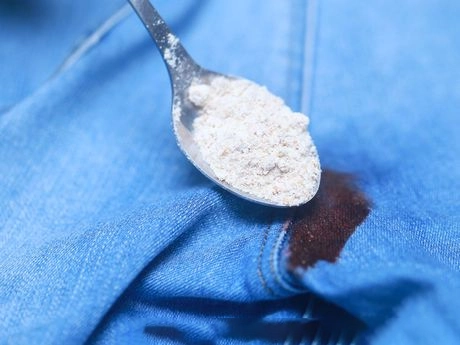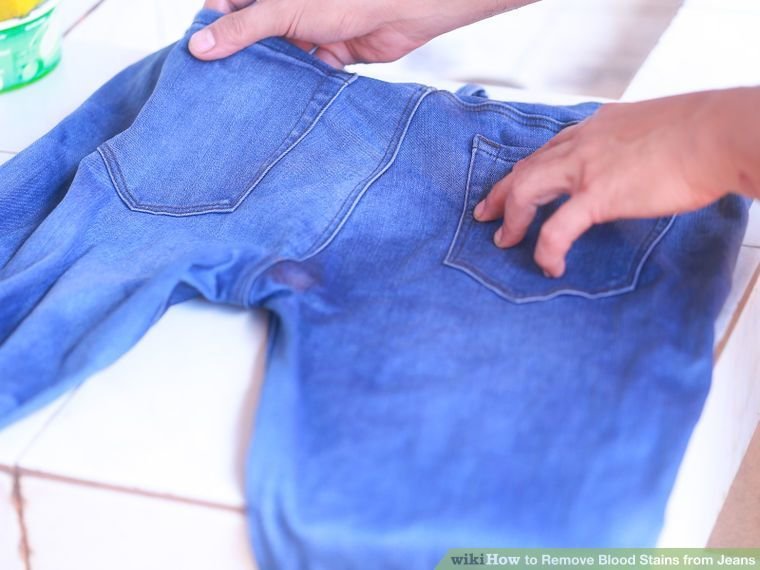Don't miss our holiday offer - up to 50% OFF!

How to get blood out of jeans
How to Get Blood Out of Jeans: A Comprehensive Guide to Saving Your Denim
Discovering a bloodstain on your favorite pair of jeans can feel like a minor catastrophe. Whether it’s from a minor kitchen accident, a scraped knee, a nosebleed, or an unexpected cut, blood has a notorious reputation for being a stubborn stain. However, with prompt and correct action, you can often remove it completely. The golden rule for fresh blood is to use cold water; hot water will cook the proteins in the blood, setting the stain permanently into the denim fibers.
This guide will walk you through the most effective methods, from quick first-aid to tackling set-in stains, and illustrate them with real-life scenarios.

The Immediate Response: Treating a Fresh Stain
Time is your greatest ally. The sooner you act, the higher your chance of success.
Method 1: The Cold Water & Salt Scrub
Blot a fresh blood stain with a clean, damp cloth. Place a dry washcloth inside your jeans directly under the stain. With a clean cloth soaked in cold water, blot the stained area to absorb the excess blood.
[1] Avoid rubbing the stain, as rubbing can cause the stain to spread. Repeat the blotting process until the cloth isn’t picking up any more blood. Use a new cloth as needed.
[2] Never use warm or hot water at any point in the process. This may cause the stain to set, and it’s much easier to remove a stain before it’s set.
- Rinse from the Back: Turn the jeans inside out. Hold the stained area under a steady stream of cold running water, pushing the blood out through the fabric’s back, not deeper into it.
- Create a Salt Paste: While the fabric is still damp, make a thick paste using cold water and table salt. Rub this paste gently into the stain.
- Soak in Cold Water: Submerge the entire stained area in a basin of cold water for 30 minutes to an hour. You can add a small amount of mild liquid detergent.
- Wash: After soaking, check the stain. If it’s gone, wash the jeans as you normally would, but still using the cold water setting. If a faint mark remains, repeat the process before drying.
Method 2: Hydrogen Peroxide (The Best for White & Light Denim)
Hydrogen peroxide is a mild bleach and a powerful blood stain remover. Important: Test this on an inconspicuous area (like the inside of a belt loop) first, as it can cause slight color fading on darker indigo jeans.
- Apply: Pour a small amount of 3% hydrogen peroxide directly onto the fresh stain. You will see it fizz immediately as it breaks down the blood.
- Blot: After it stops fizzing, blot the area with a clean, cold, damp cloth.
- Rinse and Wash: Rinse thoroughly with cold water and then launder as usual.
The Long Game: Dealing with Set-In Stains
If the blood has already dried, don’t despair. You’ll need stronger tactics, but the “cold water only” rule still applies.
Method 3: Enzyme Pre-Soak & Detergent
Enzymatic pre-wash treatments or detergents (often marketed for babies or biological stains) are designed to break down protein-based stains like blood.
- Soak: Fill a basin with cold water and add the enzymatic detergent or a pre-wash soak like OxiClean™ Versatile Stain Remover (following package directions). Submerge the jeans and let them soak for several hours or overnight.
- Scrub and Check: After soaking, gently rub the fabric together to loosen any remaining stain particles.
- Wash: Launder the jeans in the washing machine with cold water.
Method 4: Ammonia Solution
For stubborn, old stains, ammonia can be very effective. Never mix ammonia with bleach, as it creates toxic gas.
- Create the Solution: Mix one tablespoon of clear household ammonia with one cup of cold water.
- Apply: Blot the solution onto the stain using a clean cloth.
- Rinse: After a few minutes, rinse the area thoroughly with cold water.
- Wash: Launder as usual.
Real-Life Case Studies: Putting Theory into Practice
Case Study 1: The Kitchen Accident
- Scenario: Sarah was chopping vegetables when the knife slipped, giving her a small but bloody cut on her finger. She instinctively wiped her hand on her light-wash jeans, leaving a prominent smear.
- Action: Remembering the “cold water” rule, she immediately went to the sink. She turned the jeans inside out and held the stain under cold, running water, watching as most of the blood washed away. She then made a thick salt paste, applied it, and let it sit for 10 minutes while she finished cooking. After rinsing the paste off, the stain was completely gone. She threw the jeans in with her regular cold wash load, and they came out perfectly clean.
- Key Takeaway: Immediate action with simple, cold water and salt can completely resolve a fresh stain.
Case Study 2: The Bike Fall
- Scenario: Mark took a spill on his mountain bike, scraping his knee through his dark indigo jeans. He finished his ride and didn’t treat the stain until he got home a few hours later. The blood had dried and set.
- Action: Knowing hydrogen peroxide was risky for his dark denim, he opted for an enzymatic pre-soak. He filled a bucket with cold water and a scoop of OxiClean™, submerged the jeans, and left them overnight. The next morning, the stain had significantly faded but was still visible. He applied a small amount of liquid detergent directly to the stain, rubbed the fabric together, and then washed the jeans in cold water. The stain was 95% gone, leaving only a faint shadow that was unnoticeable to anyone but him.
- Key Takeaway: For set-in stains, a long enzymatic soak is a safe and effective first step for colored denim, even if it doesn’t produce perfect results.
Case Study 3: The Nosebleed Emergency
- Scenario: David experienced a sudden, heavy nosebleed at work. He managed to stop it with tissue paper, but not before several large drops of blood landed on the thigh of his new, raw denim jeans. The stain sat for over 8 hours before he could address it.
- Action: This was a tough case: a set-in stain on untreated, dark denim that he was hesitant to wash frequently. He started with a long cold water soak, which did very little. He then carefully tested hydrogen peroxide on the inside seam. Seeing no dramatic color loss, he applied it directly to the stain. It fizzed vigorously. He repeated the application twice, blotting with a cold cloth in between. After a final thorough rinse, the stain was virtually eliminated. He then hung the jeans to air dry, avoiding the dryer’s heat.
- Key Takeaway: For severe, set-in stains, you may need to escalate to stronger methods like hydrogen peroxide, but always conduct a colorfastness test first.
The Final, Crucial Step
No matter which method you use, do not put your jeans in the dryer until you are 100% certain the stain is gone. The heat from the dryer will set any residual stain, making it nearly permanent. Always air-dry your jeans after treating a bloodstain. This gives you a chance to check your work and re-treat the area if necessary.
Blood on jeans is a common mishap, but it doesn’t have to be a death sentence for your denim. By acting quickly, using the right techniques, and learning from the experiences of others, you can successfully restore your jeans to their former glory.
